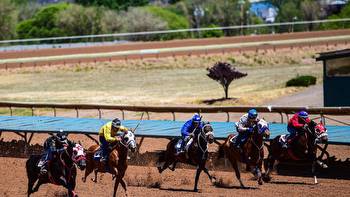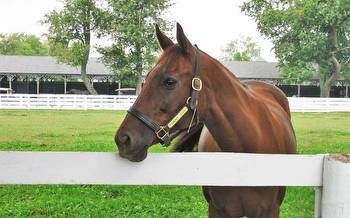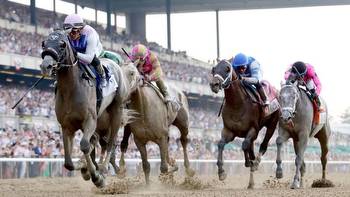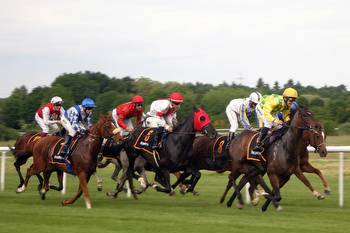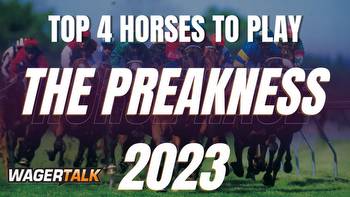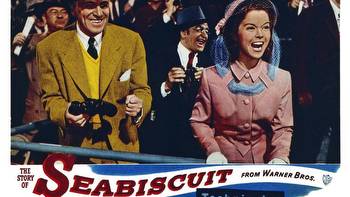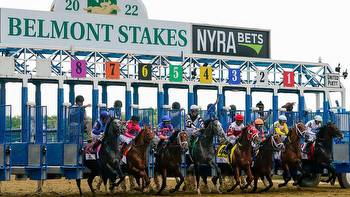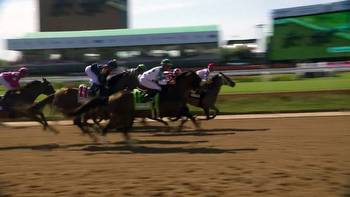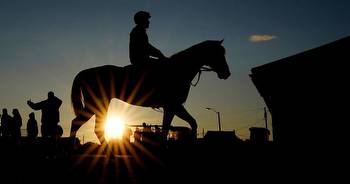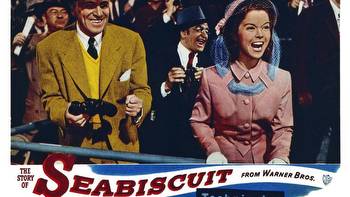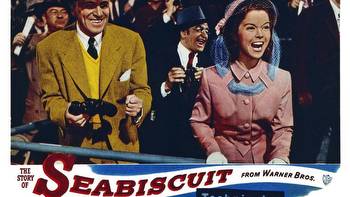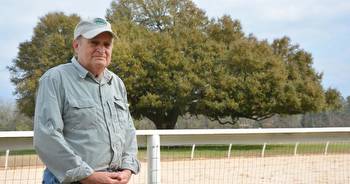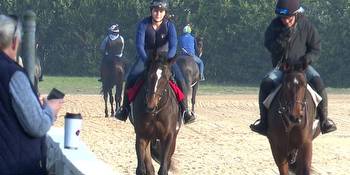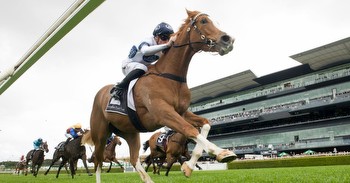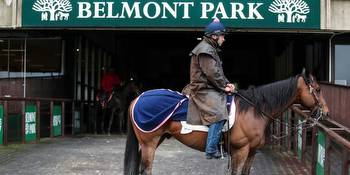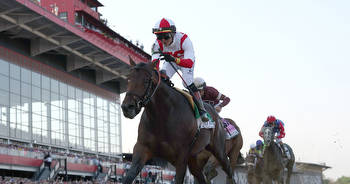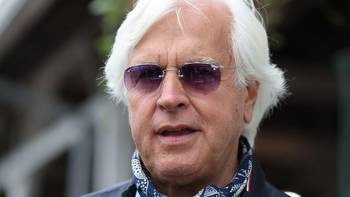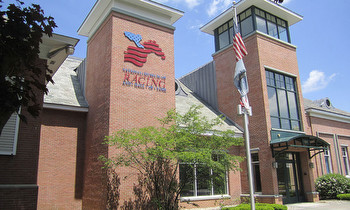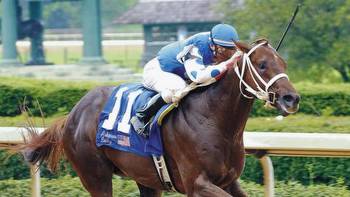Hometown History: Thundering thoroughbreds in Aiken
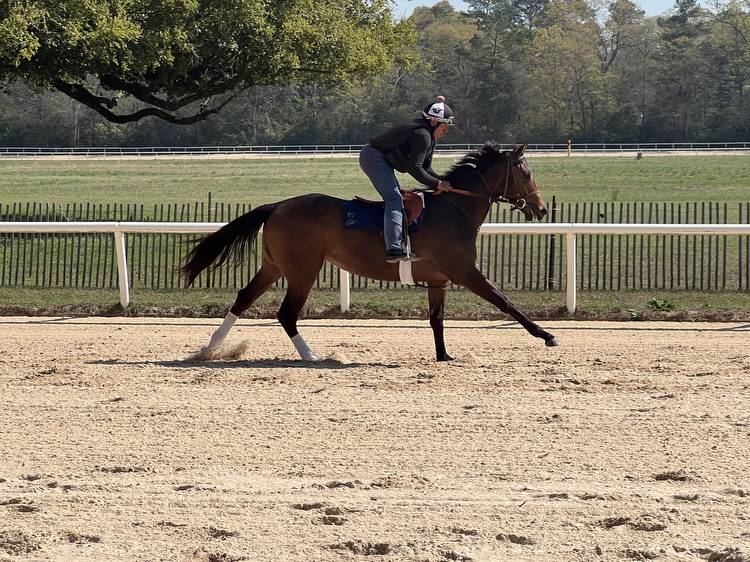
Aiken, S.C. (WJBF)- Aiken is gearing up for the first jewel in the Aiken Triple Crown on March 18th, The Aiken Trials. Aiken has a long history of training and racing thoroughbred horses.
Everywhere you go in Aiken you can find equestrian influence.
Growing up in Columbia County as a little girl obsessed with horses, I had no idea that a highly respected horse racing community was just across the river.
The Beginning
It all began after the Civil War when rich Northerners discovered that Augusta, North Augusta, and Aiken were a beautiful and warm place to spend the winters. It was also thought that the pine vapors were good for health.
Lisa Hall, Museum Coordinator for the Aiken Thoroughbred Racing Hall of Fame, tells me that many of them brought their horses with them.
“And they realized that with the sandy soil here and the temperature, that it would be a perfect place for them to bring their horses here and train them here,” she said.
Aiken Steeplechase
The wealthy played polo and raced their thoroughbreds while they wintered in Aiken. One popular type of horse racing was Steeplechase.
Jessica Miller is the event manager for the Aiken Steeplechase Association. She said that Steeplechase had its beginnings in Ireland as the result of a bet between two brothers to see who was the fastest rider.
“So the name Steeplechase originated from the sport in Ireland where they would race horses from one church steeple to the next. So, hence the name Steeplechase.”
When most people think of horse racing they think of the Kentucky Derby, which is flat racing on a flat dirt or turf track with no obstacles.
Anne Mitchell Pezzano is on the board of directors for the Aiken Steeplechase Association. She explained that Steeplechase races are a little different.
“Or in the case of Steeplechase, over any variety of fences, depending on where you are. Hurdles, timber, stonewalls with riders.”
One wealthy man from New York came to Aiken in the 1800’s as a winter colonist. His name is well known in Aiken today–Thomas Hitchcock.
Hitchcock bought 3,000 acres of land where he built a house and a steeplechase training center. Today, he is known as the father of American steeplechasing.
In 1930, Hitchcock, along with Harry Worchester Smith and Temple Gwathmey, organized the first steeplechase race in Aiken.
“Thomas Hitchcock was one of the original Winter Colonists, who Hitchcock Woods is named for. And the Aiken Steeplechase, the first races were held in Hitchcock Woods over the Aiken Hound drag lines,” Miller said.
Racing in the United States was suspended during World War II when so many men went to Europe to fight.
“My mother told me, at teenage parties during the second World War, there were no boys. So that would mean no jockeys. Possibly no trainers,” said Mitchell Pezzano.
Now the second jewel in the Aiken Triple Crown, the Aiken Steeplechase was brought back by a group of thoroughbred owners and trainers.
“From, I believe it was 1967 when Ford Conger revived the Aiken Steeplechase and did it at what was then Clark Field. And Clark Field was named after him. The Ford Conger Field,” explained Mitchell Pezzano.
The Aiken Steeplechase continued to grow and become more popular, now with around 30,000 patrons attending each spring.
In 2019, the Aiken Steeplechase Association built a new track and after taking two years off because of the pandemic, began racing again. The Spring and Fall meets are part of a national racing circuit.
“Aiken, Camden and Charleston run the only three sanctioned NSA meets in South Carolina,” Mitchell Pezzano said.
This year’s Steeplechase will take place March 25th.
The Aiken Trials
The first jewel in the Aiken Triple Crown is the Aiken Trials, held at the Aiken Training Track. The Trials are flat races, like what you see at the Kentucky Derby.
Aiken Training Track Vice President, Barry Bornstein, explained that the races started in 1942 and it’s the first race for many young horses.
“This is the first time they have an opportunity to run with other horses and also before a crowd. The horses will come out here and if anything is new in the environment, they’ll react to it,” he said.
The Trials draw tens of thousands of spectators each year. Dozens of horses that trained at the track and ran in the Trials have gone on to become champions of races like the Kentucky Derby.
The third jewel in the Aiken Triple Crown used to be harness racing, but in recent years the Pacers and Polo matches took its place.
The Aiken Training Track
Aiken is very well known in the flat racing world for its thoroughbred training facilities, specifically the Aiken Training Track. It was built in 1941 by winter colonist, Fred Post.
“William and Fred Post. They were polo players, but they bought the property where the current Aiken Training Track is located,” said Hall. “And they, along with some other folks here in town, Pete Bostwick and some of the other folks, decided, let’s convert the training track area, which was full of polo fields at that time, and let’s make a regular training track.”
Bornstein said Post recognized that conditions were perfect for training.
“The weather is one. And secondly the make up. You want the surface to be as perfect as possible. you don’t want it over wet. You don’t want it too dry. And you want it to be, also in a place where you can cushion the horses when they run.”
The track opened in November of 1941 and by spring of 1942 there were 200 horses booked to train there. Bornstein tells me that the Training Track soon became one of the most popular tracks in the South East.
“Some of the top barns in the 40’s, 50’s and 60’s were here. We were home at one time to the Darley Godolphin barn…Stable. Of course, for over 40 years we were home to Dogwood Stables. And the late Cot Campbell, who absolutely was an icon and still is an icon in thoroughbred racing.”
The Darley Godolphin barn Stables is owned by the vice president of the United Arab Emirates who is also the ruler of Dubai. He is just one of many famous thoroughbred owners who use the Aiken Training Track.
“One of them was Bing Crosby. He had a stable named ‘Bingling.’ Elizabeth Arden who was the makeup queen in the 50’s, 60’s, 70’s had her stable here in Aiken. it was called ‘Main Chance Stable.’ Red Smith, who was affiliated with Seabiscuit, brought some horses here to train,” Hall explained.
The Tragedy of Blue Peter
There is a single live oak tree that sits in the middle of the track known as Blue Peter’s Tree.
Blue Peter was from Aiken and won 8 out of the ten races he ran and was named the 1948 Champion Two-Year-Old Male Horse of the Year. Blue Peter’s grand sire was the famous Man o’ War and his sire War Admiral, both Hall of Fame horses.
He was getting a reputation for being unbeatable and was the favorite to win the 1949 Kentucky Derby, when he became ill.
“And unfortunately, when he was here training he came down with a stomach illness. It could have been colic, it could have been something else. There’s really not a lot of documentation on exactly what it is,” said Hall. “So they ended up having to lay him up the entire year. He didn’t race for a whole year.”
Blue Peter began training again and seemed to be doing well. But tragedy struck when he developed pneumonia and died in his stall at the Aiken Training track on January 12, 1950.
“So there is a large live oak tree called Blue Peter’s tree, which is near the clocker stand and that is where he is buried. And the most unique thing about that is, his grandfather who is Man ‘o War, was buried in a casket and had a funeral and he’s buried up in Kentucky. They did the same thing for Blue Peter. And his funeral was actually covered by the New York Times,” Hall explained.
The story touched so many in the racing world that Blue Peter’s Tree became the logo for the Aiken Training Track.
Over the years the track has developed a reputation for excellence in the horse racing world.
“This is considered one of the top training facilities for thoroughbreds in the country,” smiled Bornstein.
Horses are such a huge part of the Aiken life style that the city is one of very few where horses have the right of way.
“One other thing is that we have all these dirt roads right around the track and that’s a great- we call it hacking – and beyond taking your horse onto the track, you can hack right on the streets here and literally go right into the Hitchcock Woods,” Bornstein said.
The Hall of Fame
Thoroughbred racing is so important in Aiken it is documented in the Aiken Thoroughbred Racing Hall of Fame and Museum. It opened in 1977 and is located in the old carriage house at Hopeland Gardens. All of the featured horses trained in Aiken and were named a National Horse of the year.
“Probably our most famous horse is Kelso who ran in the 60’s. Kelso was the national trained Horse of the Year for five years in a row, from 60-65. You won’t ever see that again. You might see a horse nowadays who might win one or two national championships, but not the five. Because now there’s more of the ‘Let’s let them win a Kentucky Derby and get them out to the breeding shed,'” said Hall.
Kelso was born in 1957 and like his competitor Blue Peter, came down from Man o’ War. He was not known for being a well mannered horse, but it didn’t stop him from 21 major wins.
Kelso still holds the World Record for fastest two miles on dirt in the 1964 Jockey Club Gold Cup, which he won 5 times in a row.
Another horse of note is Sea Hero, who is special though not in the Hall of Fame, because he didn’t hold the tile of National Horse of the Year.
“He trained here in Aiken in 92, early 93 and won the 93 Derby. And his owner Paul Melon, who owned Rokeby Stables and his trainer Mack Miller, neither of them had ever won one of the Triple Crown races. And this turned out to be their last opportunity. And Sea Hero won,” laughed Hall.
When Blue Peter pulled out of the 1949 Kentucky Derby, another Aiken trained horse named Capot became a favorite to win.
Hall: “He missed winning the Derby by a neck. But he won the Belmont and the Preakness. So, we missed out on a Triple Crown horse by a neck.”
Kim: “Oh, so close.”
Hall: “Yes, it was very close. And we’ve had several horses win two out of the three. But none that close- came that close but him.”
The first leg of the Aiken Triple Crown, the Aiken Trials is this Saturday, March 18 at the Aiken Training Track.
Hey CSRA! That’s just PART of your Hometown History.

